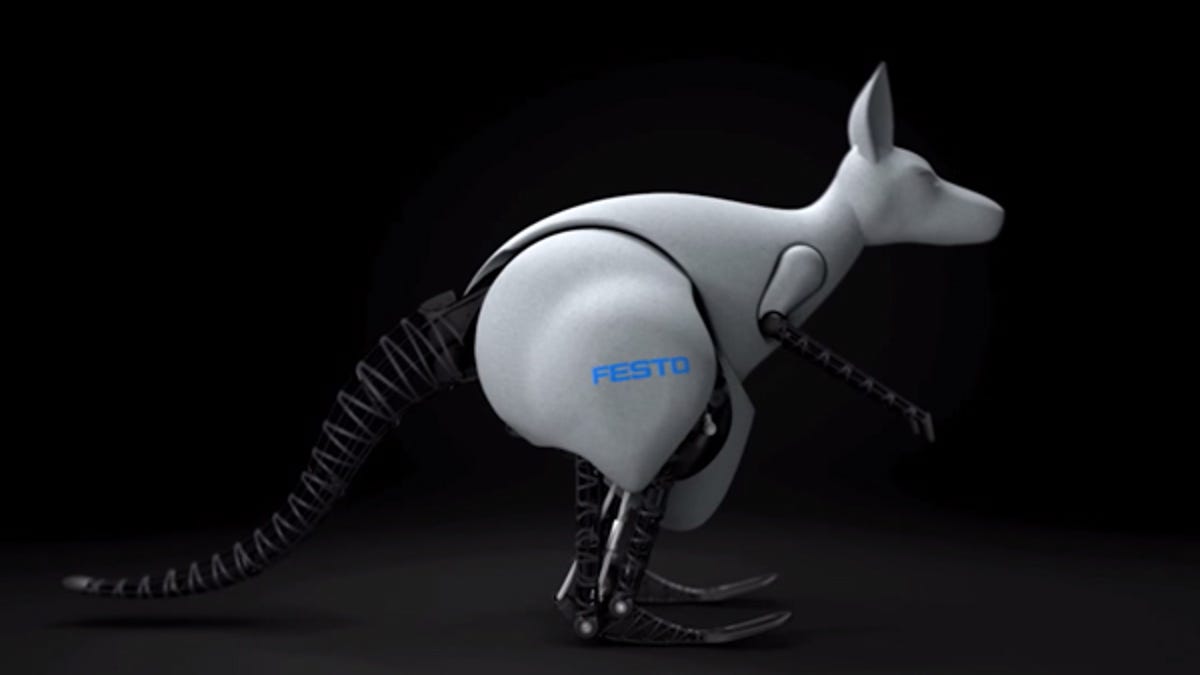Robotic kangaroo generates its own energy
Festo has once again turned to nature to build a gesture-controlled robotic kangaroo that stores and uses the kinetic energy of its own motion.

(Credit: Festo)
Automation company Festo has once again turned to nature to build a gesture-controlled robotic kangaroo that stores and uses the kinetic energy of its own motion.
German robotics company Festo achieved a lot of cool cred with its dragonfly-inspired BionicOpter, but now it's become a little more down-to-earth. Festo's latest project is not only inspired by a more terrestrial creature, it's a terrestrial creature from down under: our very own national animal, the kangaroo.
The one-metre tall, 7kg BionicKangaroo doesn't move quite as smoothly as its natural counterpart, but it has a few other moves up its chassis. After over two years of development, the finished robot uses a combination of elastic tendons, pneumatics and servos to reproduce the energy-efficient leaping movements the animal is known for.
Each leg houses a pneumatic cylinder and an elastic tendon. When the robot is activated, the tendons are pre-tensed, and it leans its body forward, shifting its centre of gravity. When the correct angle for ideal velocity is reached, the pneumatic cylinders release the tendons, and the robot leaps into the air. Servos move the legs forward and lift the tail for the most aerodynamic shape while airborne.
When the robot lands, the tendon tenses again, converting the kinetic energy of the jump into stored energy (using lithium polymer rechargeable batteries, which can also be charged externally) for the next jump. As it continues jumping, it continues using the energy from the previous jumps, just like a real kangaroo.
And it can be controlled using gestures. The team fitted the robot with Bluetooth, through which it can communicate with the Myo gesture control bracelet.
Like the BionicOpter, though, the BionicKangaroo won't be made commercially available. The robot is a proof-of-concept that demonstrates a combination of pneumatic and electric drive technology, and the rather exciting energy recovery and storage. But you can take a look at what it can do in the video below.
Via www.festo.com

